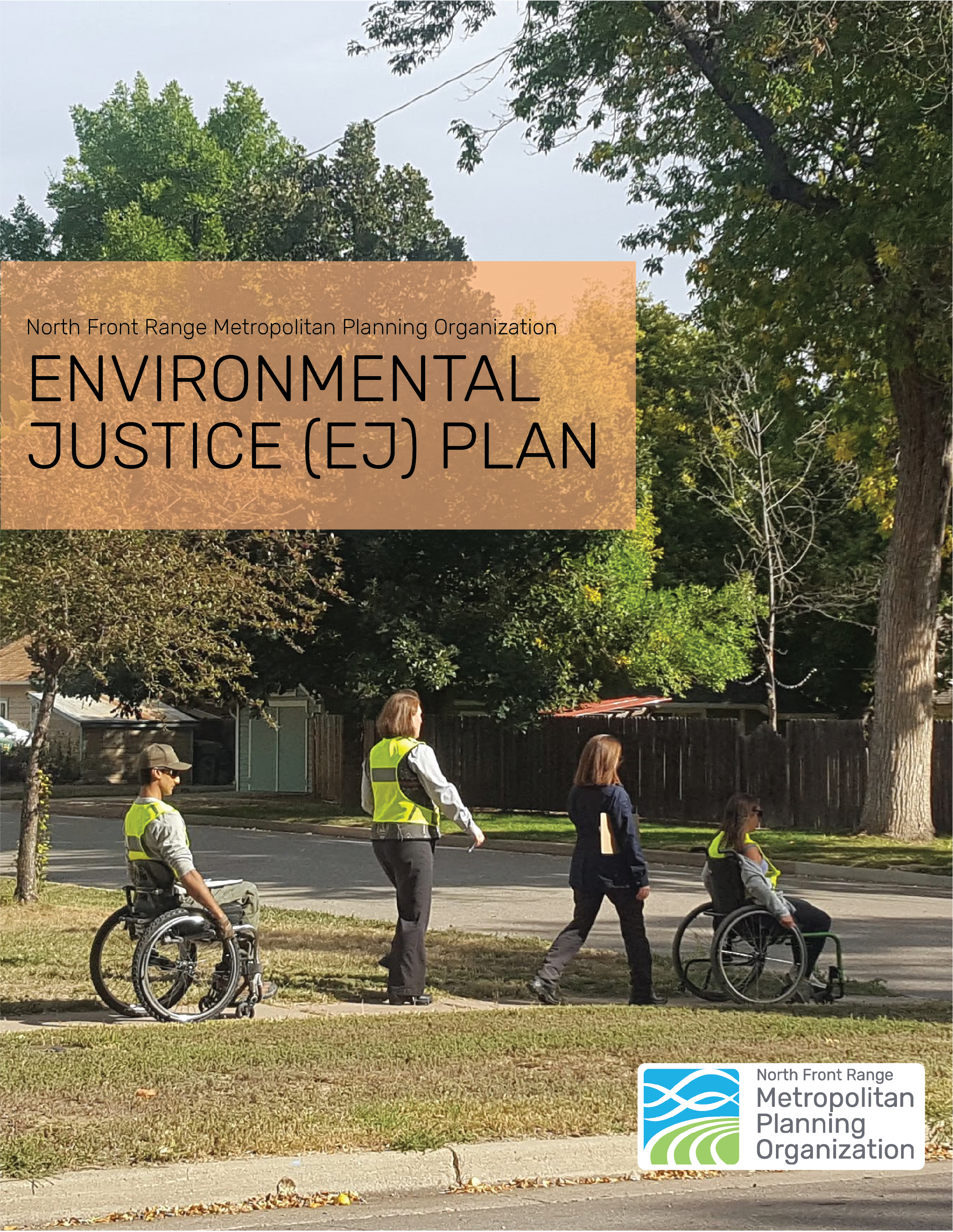What does Environmental Justice mean?

The NFRMPO is expanding Environmental Justice (EJ) considerations in its transportation planning and programming processes as part of the new EJ Plan. EJ, at its core, is ensuring disadvantaged populations do not face higher and more adverse impacts of public programs or projects than the rest of the population. Throughout history, low income and minority populations have endured discrimination, been excluded from the decision-making process, and have often faced more neighborhood and localized impacts, worse air quality, and fewer services.
There are three major principles of EJ:
- Avoid, minimize, or mitigate disproportionately high and adverse human health and environmental effects
- Ensure the full and fair participation by all potentially affected communities in the transportation decision-making process.
- Prevent the denial of, reduction in, or significant delay in the receipt of benefits by minority and low-income populations.
What does “minority” or “low income” actually mean?
Guidance from the US Department of Transportation (DOT) and the Colorado DOT (CDOT) define these populations based on information collected by the US Census Bureau.
- Low Income – Household income is at or below the Department of Health and Human Services (HHS) poverty guidelines.
- Low income population – Any readily identifiable group of low-income persons who live in geographic proximity.
- Minority – Populations including Black, Hispanic or Latin, Asian American, American Indian and Alaskan Native, and/or Native Hawaiian or Pacific Islander as self-identified in the Census.
- Minority population – Any readily identifiable group of minority persons who live in geographic proximity.
In the NFRMPO region, data about income and minority status is analyzed to figure out a regional average. Areas with percentages higher than the regional average for either or both populations are considered EJ.
What does EJ look like in the NFRMPO region now?
To date, EJ analysis has occurred in some NFRMPO programs, like the Transportation Improvement Program (TIP) and Regional Transportation Plan (RTP). The EJ Plan will address more areas to incorporate EJ and equity principles, best practices for local communities, and the consideration of additional populations which have faced hardships. Expanding the agency’s EJ policy, including more residents, and hearing more diverse voices will help the NFRMPO better serve Northern Colorado.
EJ Plan

The EJ Plan is being drafted to create an official EJ policy, integrating EJ and equity guidelines throughout the NFRMPO’s work. Goals of the Plan include:
- Analyze access to the decision-making process across the region
- Identify partnerships and engagement strategies
- Define clearly the benefits and burdens that fit our local and regional context
- Consider additional EJ populations, including those with above average rates of limited English proficiency (LEP), older adults, individuals with disabilities (ambulatory, self-care, independent living, hearing, vision, or cognitive difficulties), and zero-car households
- Recommend improving EJ analysis and increasing EJ considerations on transportation projects
Once complete, the EJ Plan will be a toolkit for NFRMPO staff, local agencies, and other partners. Keep checking this area for resources, presentations, fact sheets, and other materials produced during the planning process.
What are some EJ Best Practices from the NFRMPO region?
Throughout 2020, NFRMPO staff have met with and continue to meet with stakeholders around the region, learning about what local governments have been doing to increase access to the local planning and programming processes.
- During 2015, Greeley Evans Transit (GET) redesigned its transit network. Behind the scenes, GET staff compared the new bus routes to low income and minority areas to identify any adverse or undue burden. Some bus routes were slightly modified accordingly.
- Fort Collins set aside mini-grants for Community Partners during its City Plan update, partnering with local nonprofits and advocacy agencies to get more feedback and input from low income, minority, senior, and Limited English Proficiency (LEP) populations. Mini-grant funds were used for things like designing, planning, and implementing engagement events. Further, Community Partners received facilitation training and assistance in translating materials. Overall, around 30 meetings were held throughout Fort Collins, reaching hundreds of participants.
- The Larimer County Department of Health and Environment’s Built Environment Program has integrated the Language Justice model into its trainings and programming. Language Justice is the belief all people should be able to participate regardless of their native language. This has involved having simultaneous interpretation to allow all people in the room to participate in real time.
Get Involved
Get involved in the NFRMPO process by checking out our Public Involvement page.
Contact Ryan Dusil at (970) 422-1096 or rdusil@nfrmpo.org.
